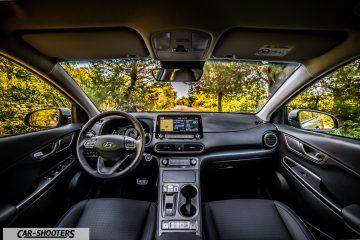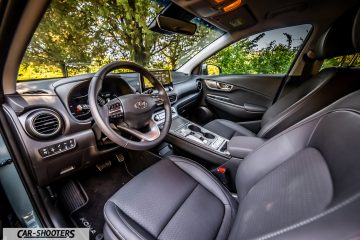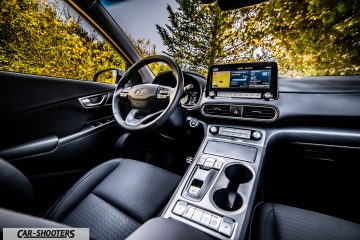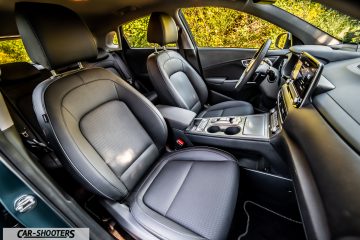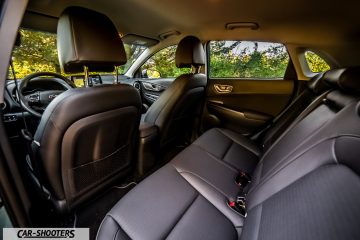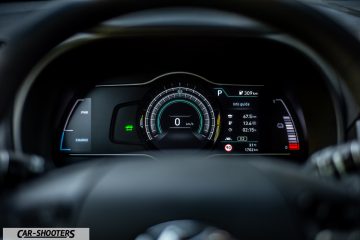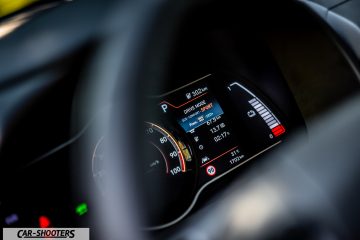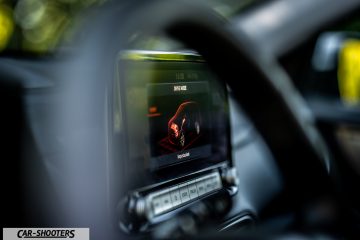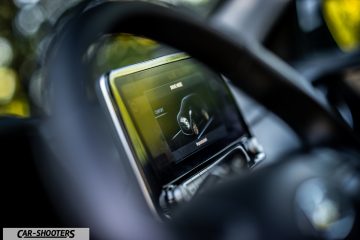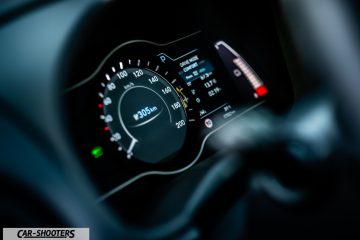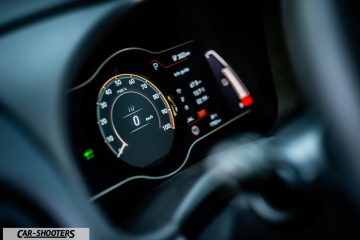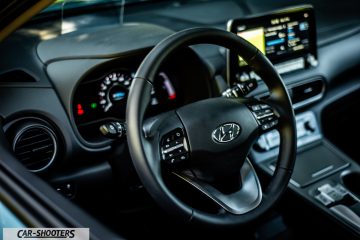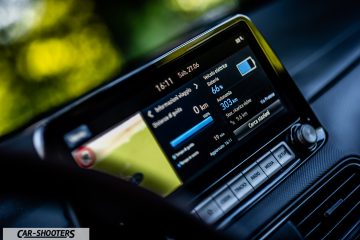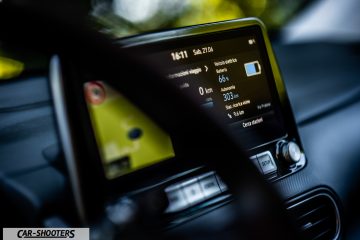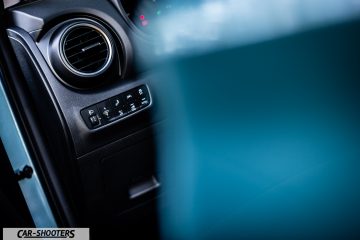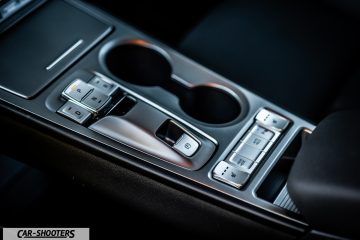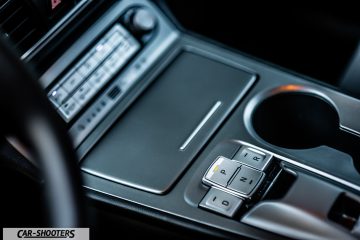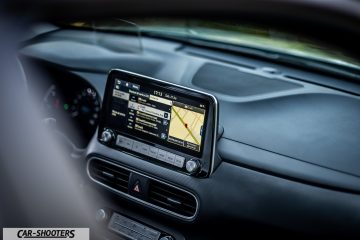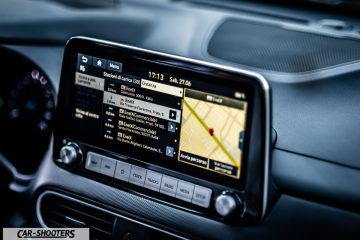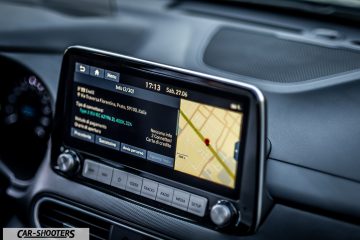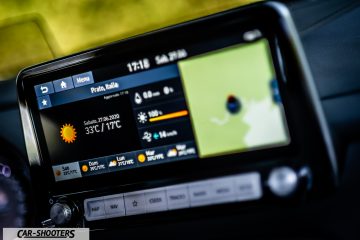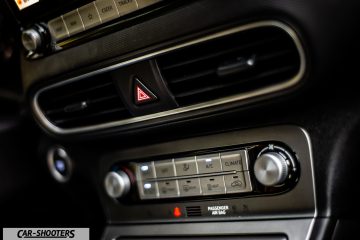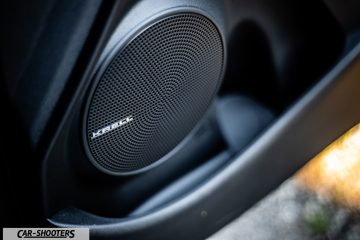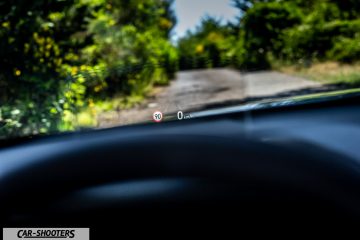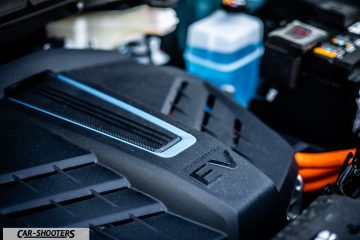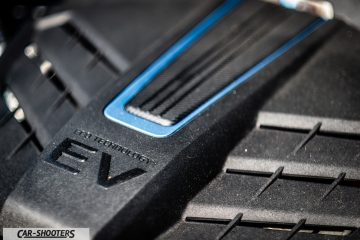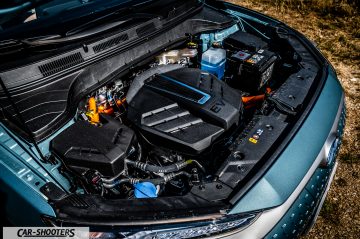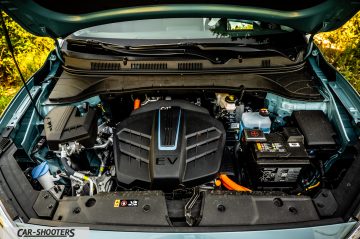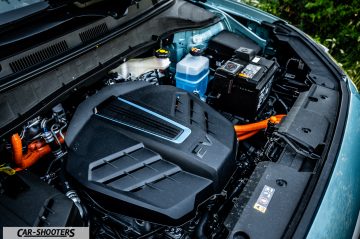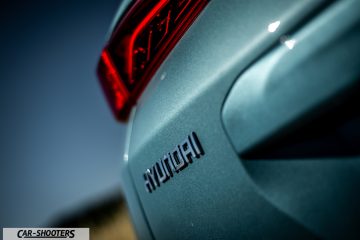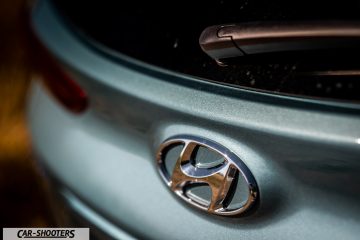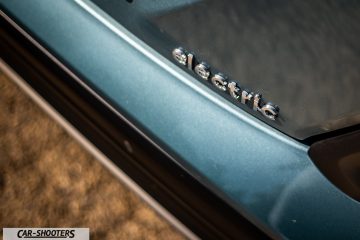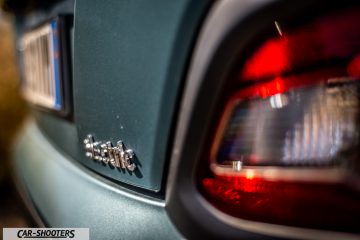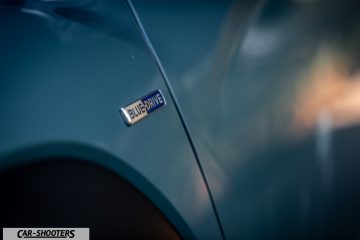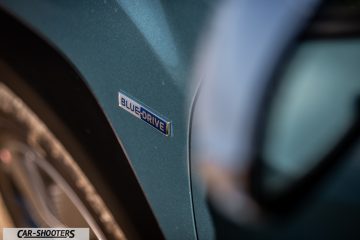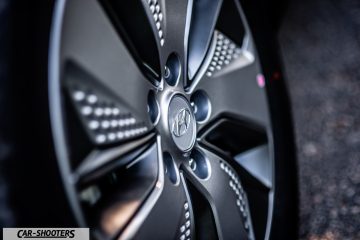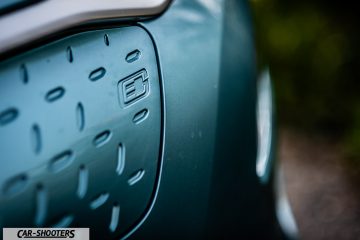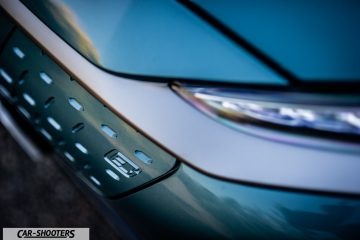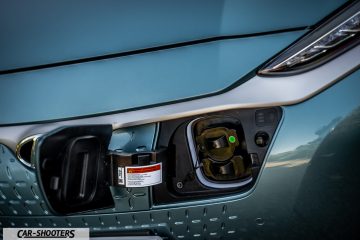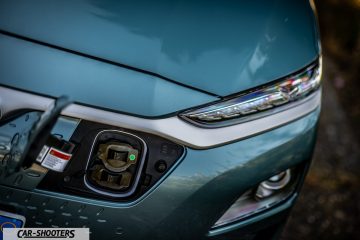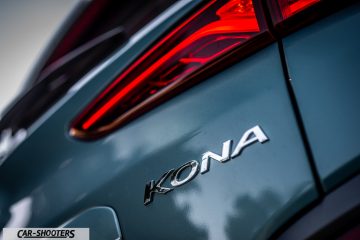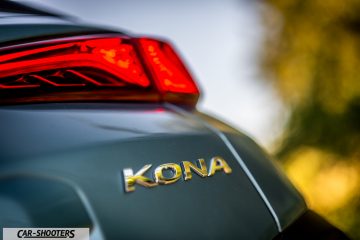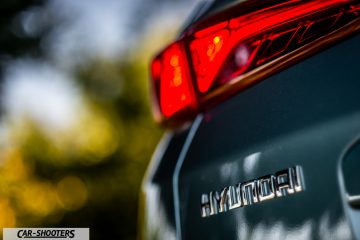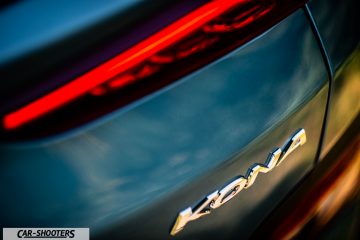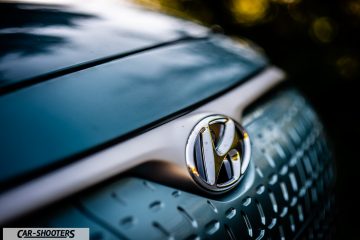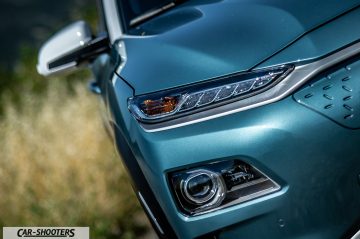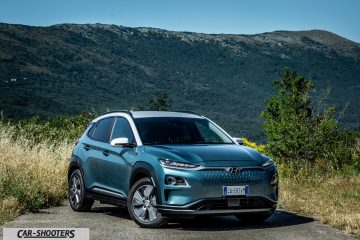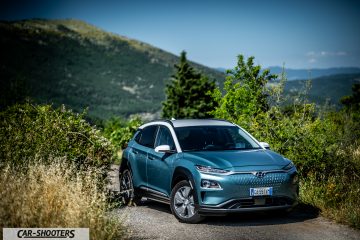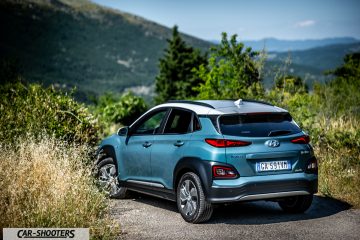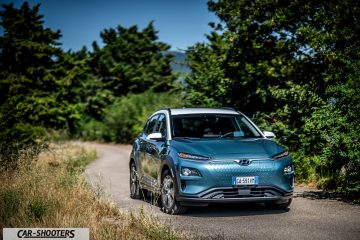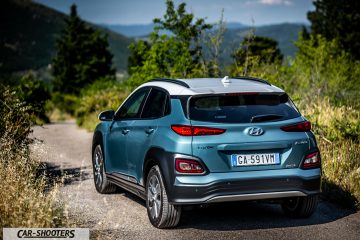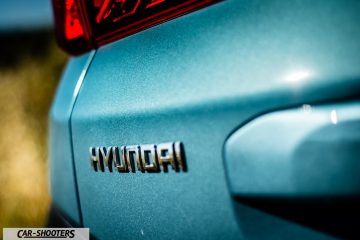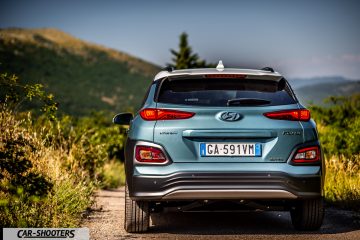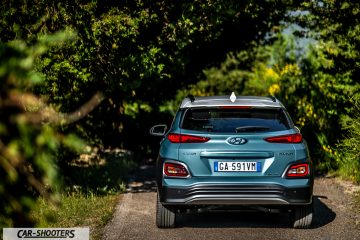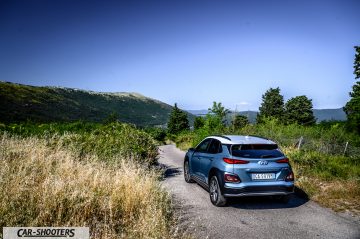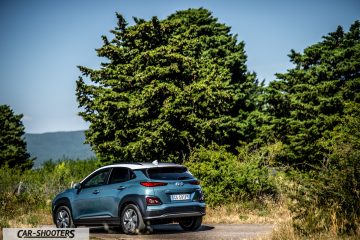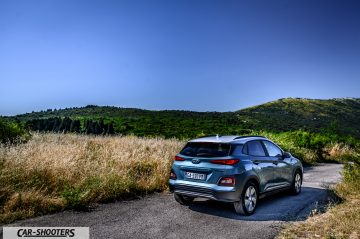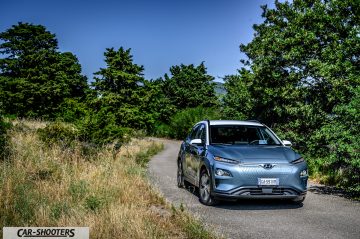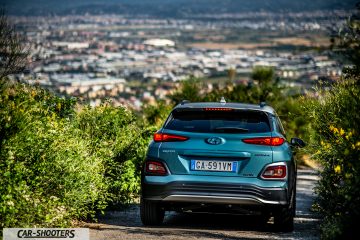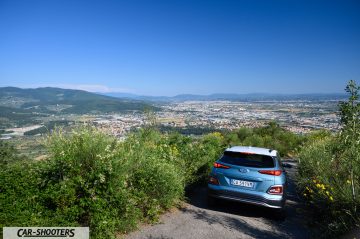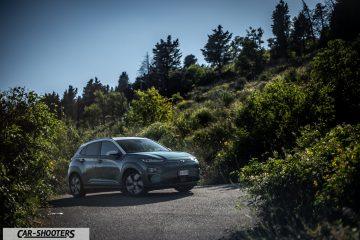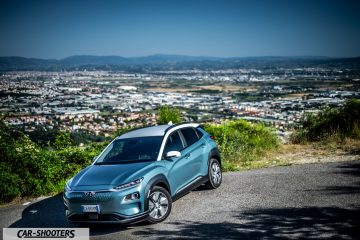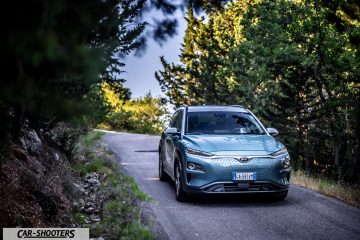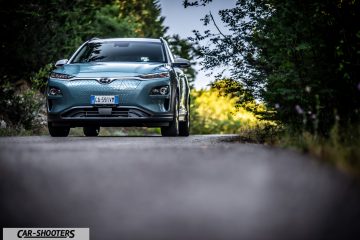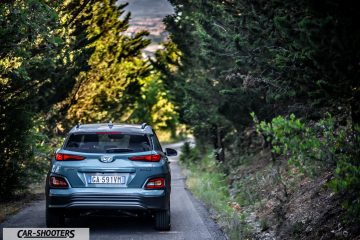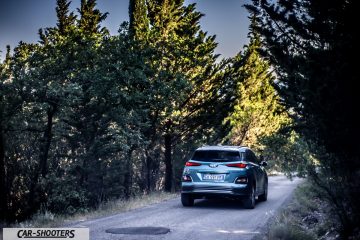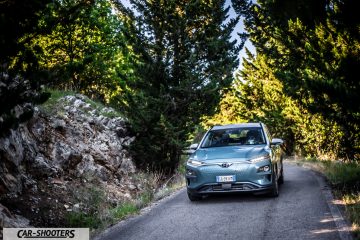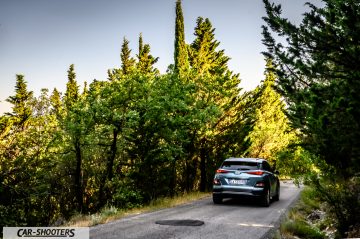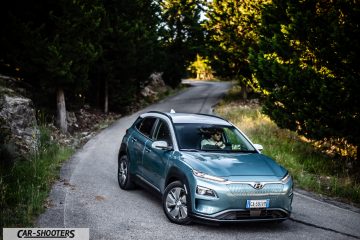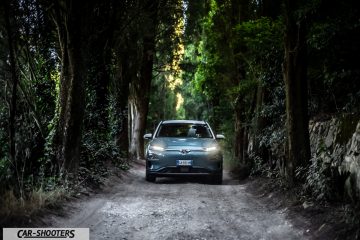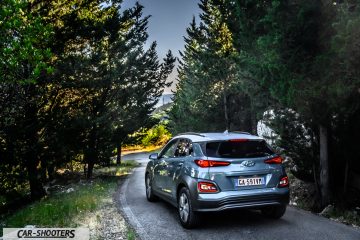Today we are driving a Hyundai Kona Electric for a review! This compact SUV was a delightful discovery. Let’s go into the details of this Hyundai Kona Electric Excellence with 64kwh battery. Hyundai Kona was launched in 2017 only in versions with internal combustion engines, to then become hybrid and finally full electric in 2018. The model being tested, in particular, is the latest restyling of 2020 that brings with it numerous updates.
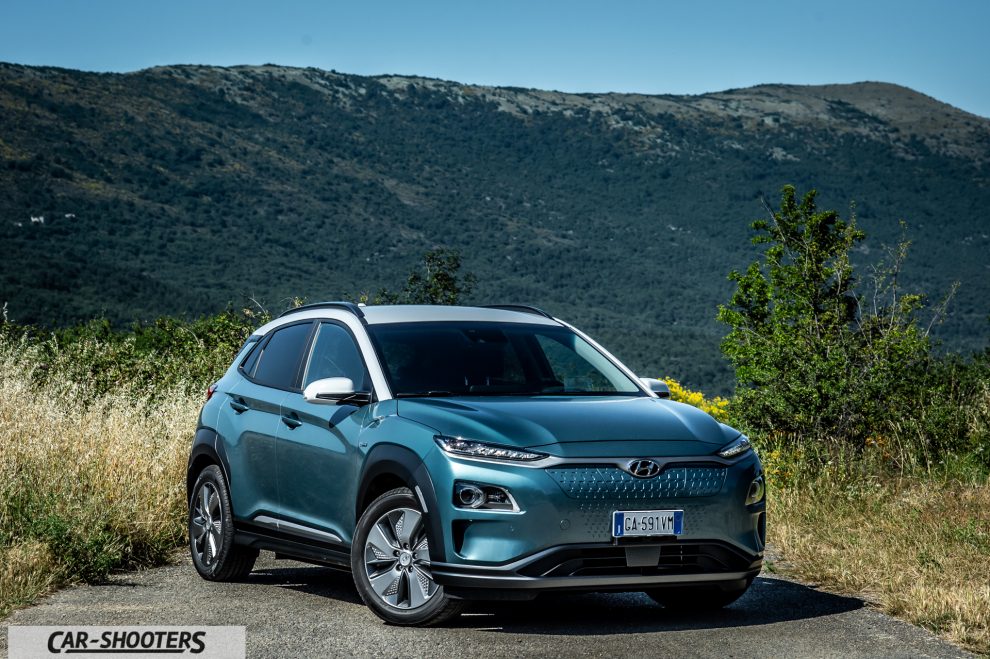
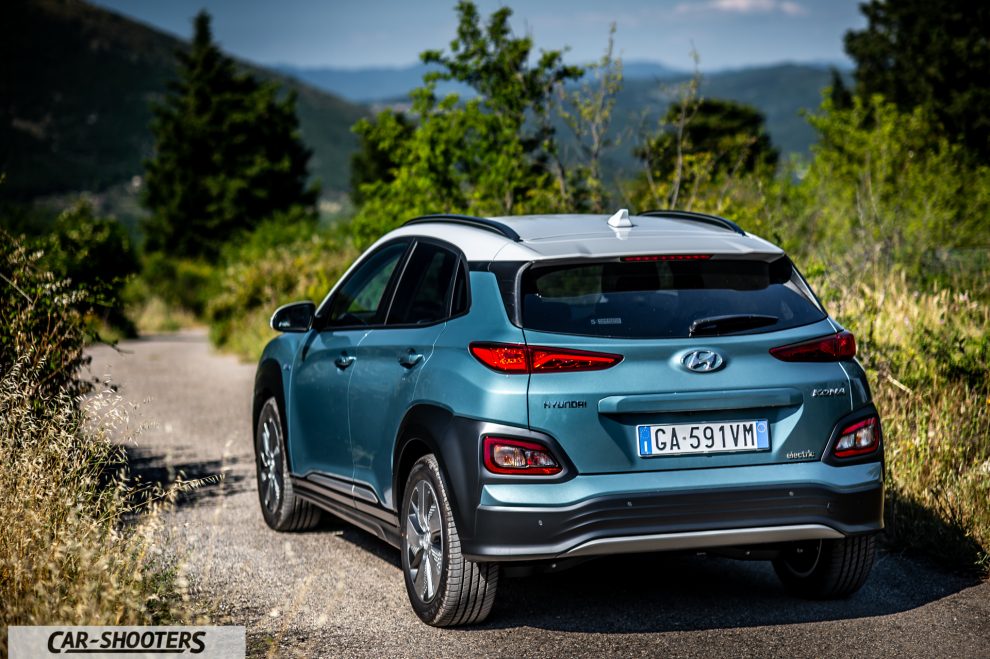
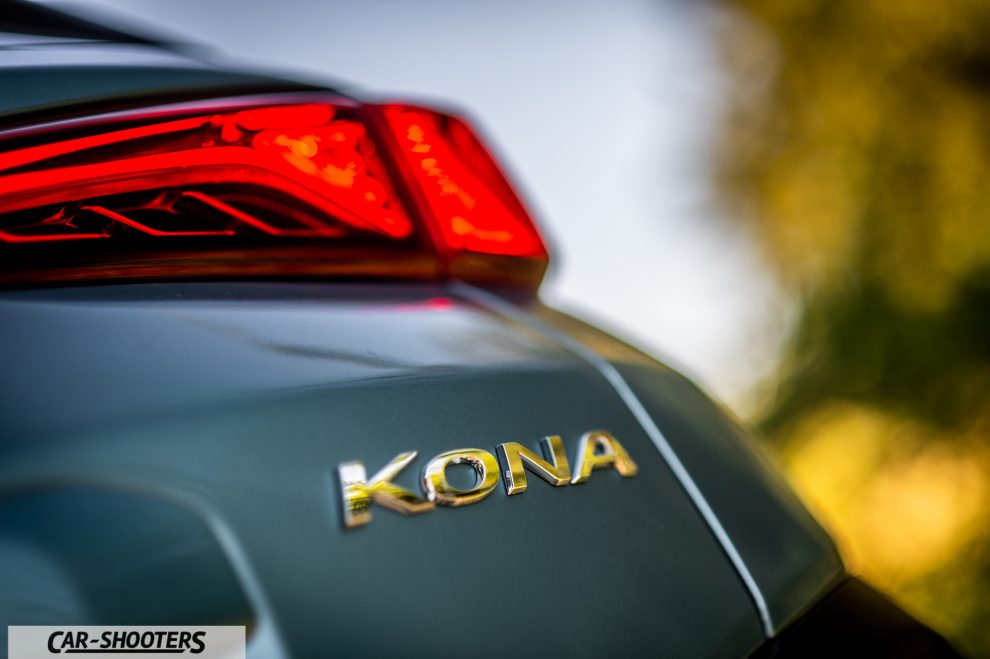
Seeing it from the outside, I consider the design of the Hyundai Kona very captivating and refined. The combination of Ceramic Blue – White contrast roof of the sample under test is the icing on the cake. For this car the combination is really the perfect match. We can spot the difference with the endothermic sisters by noticing the absence of the front grille, replaced for aerodynamic questions with a single non-perforated piece where the charging port is located; very comfortable in this position!
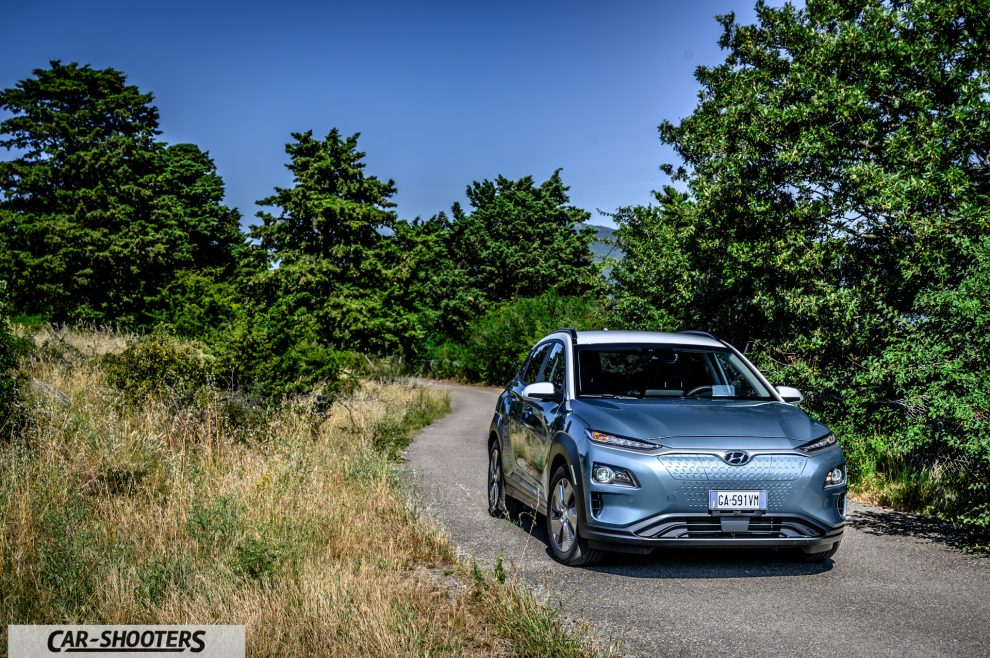
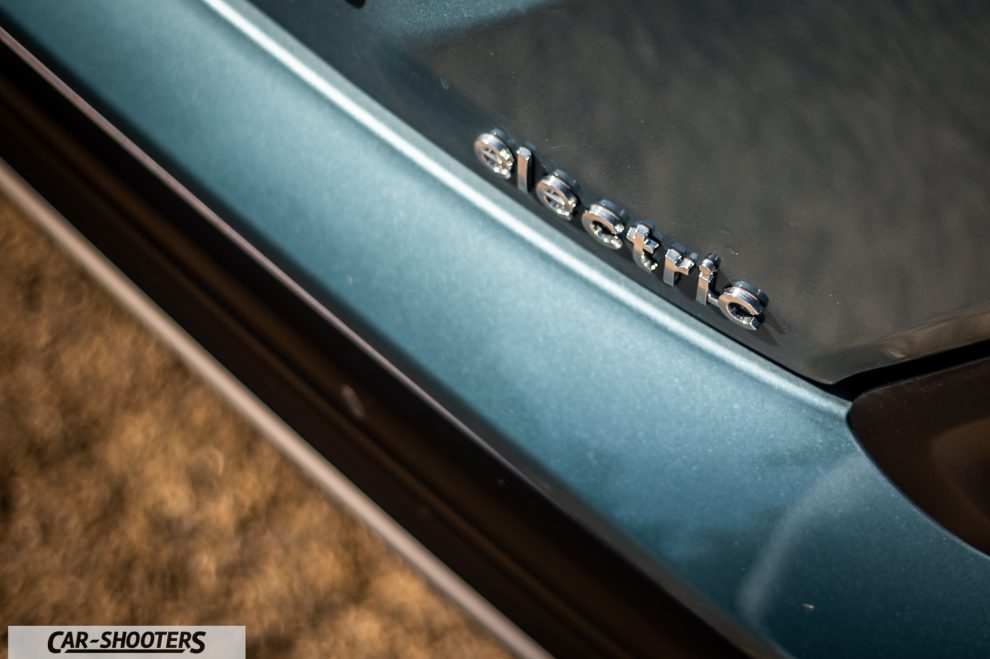
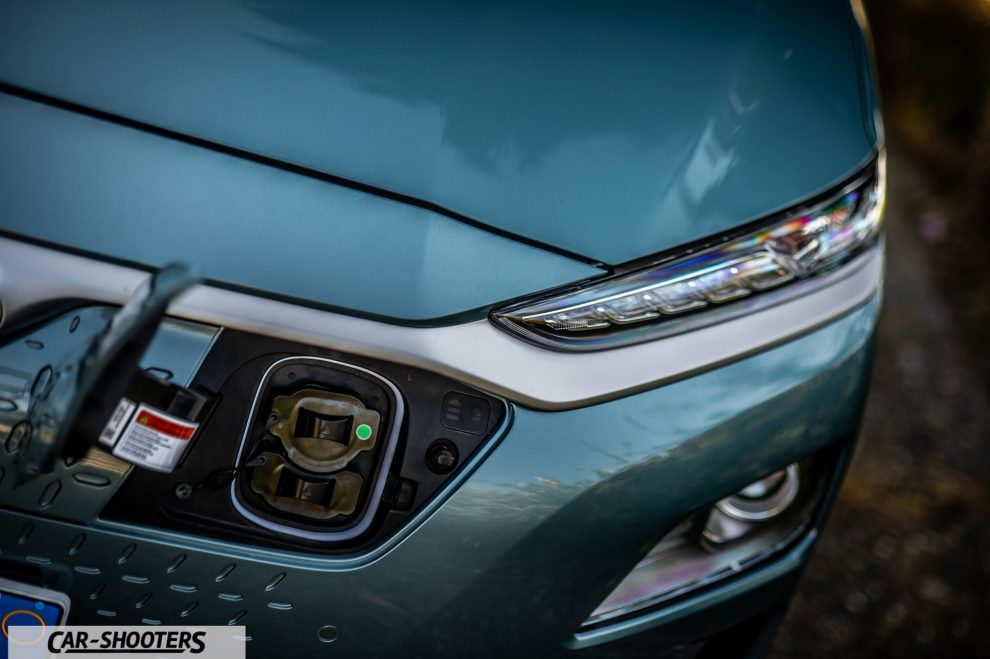
Speaking of charging, this Kona, as standard, is equipped with a single-phase charger at 32A (7.4kw), but the three-phase charger at 16A (11kw in three-phase, 3.5kw in single-phase) is available as an option at 650 €. Reflecting on the usefulness of this accessory, I came to the conclusion that it is mandatory to have. Most of the alternating current columns installed in Italy are from Enel and, unfortunately, both in single-phase and three-phase are often limited well below the fateful 32A, effectively limiting the charging power. With the three-phase charger at 16A, however, the maximum power available is always exploited, often managing to halve the charging time. Different speech for charging in direct current, in this case the car accepts up to 75kw via the CCS2 socket.
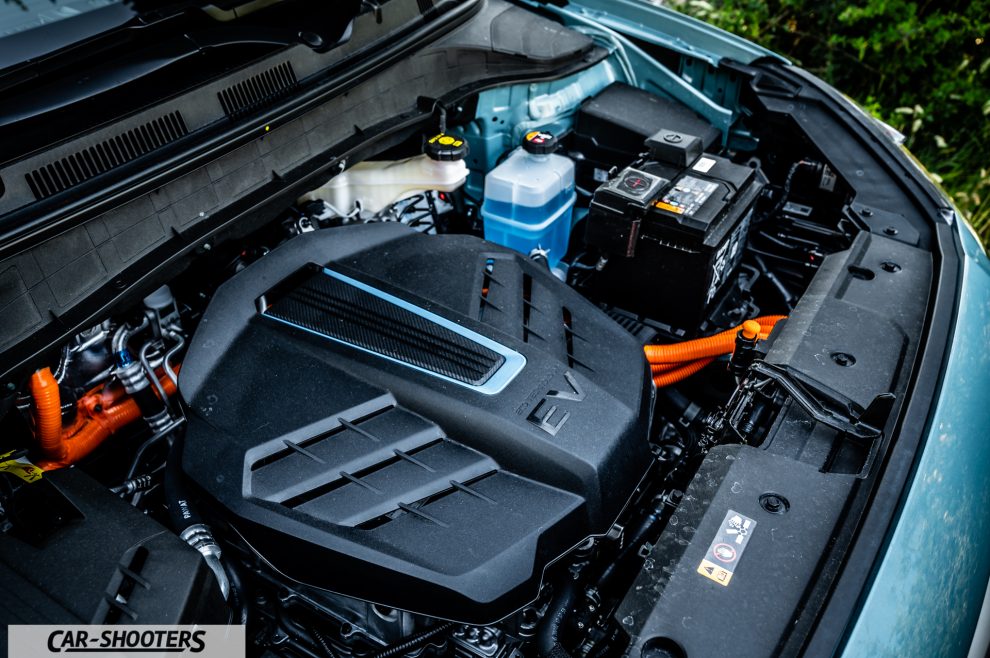
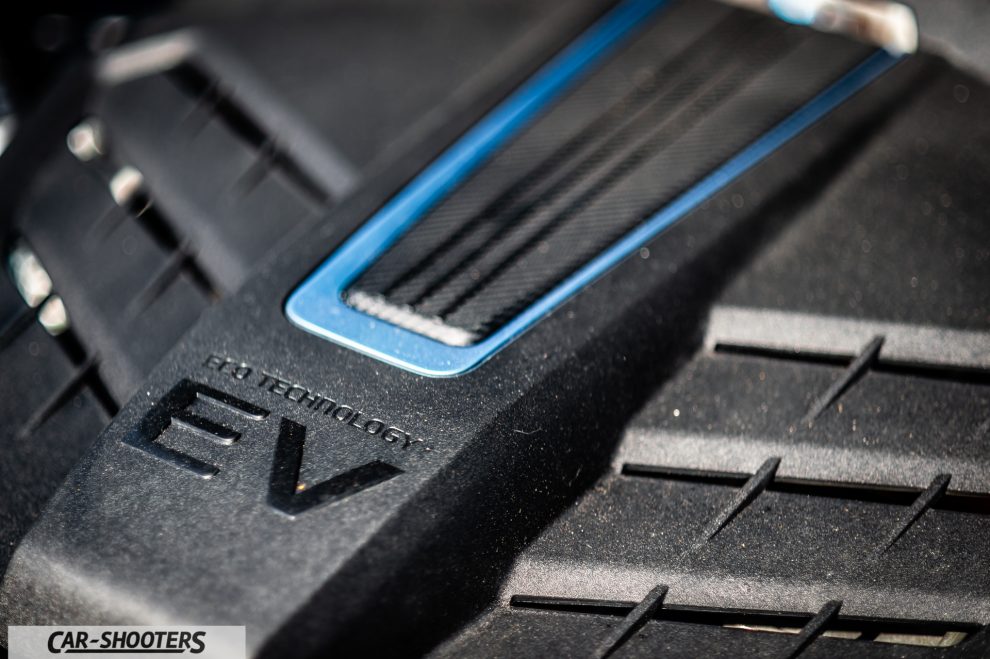
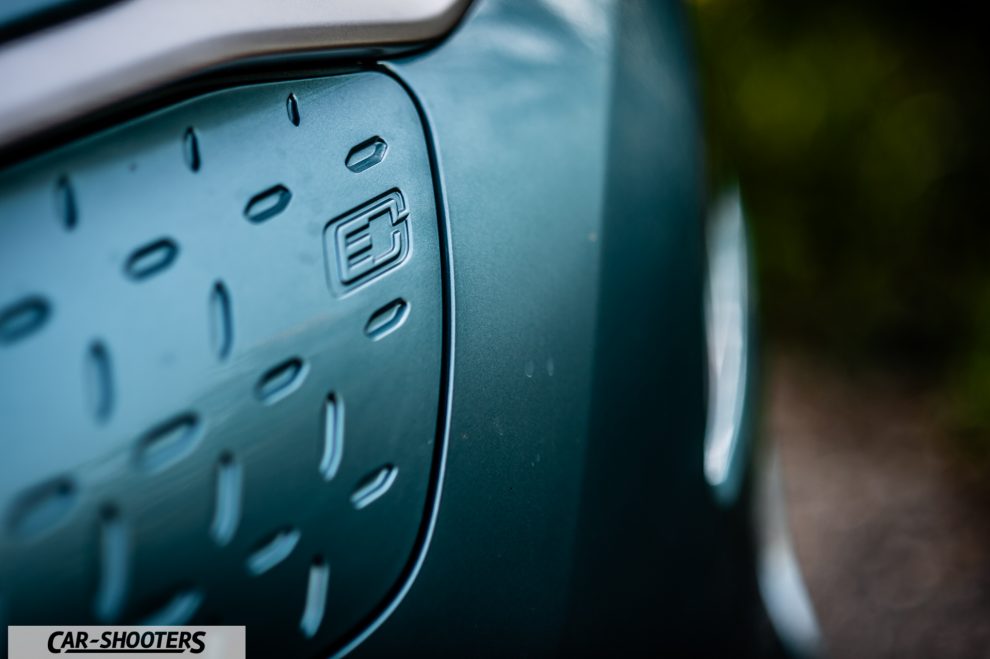
Entering the passenger compartment, I immediately notice that the plastics are assembled perfectly; there are no vibrations, no smudges or imperfections are noticed. The seats are comfortable and I can immediately find the correct driving position. Really above average quality for the B segment.
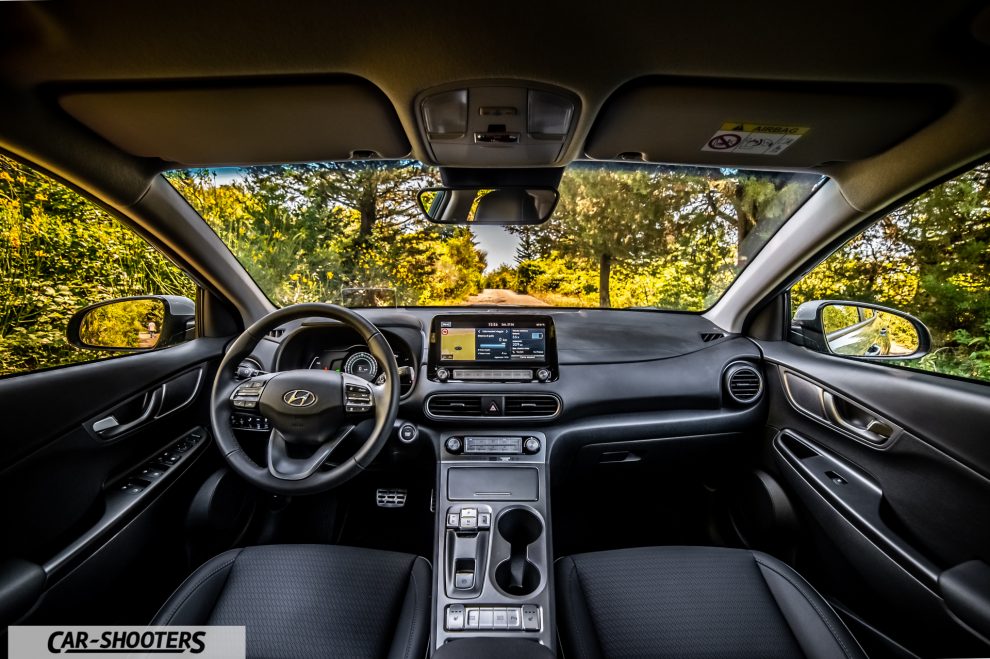
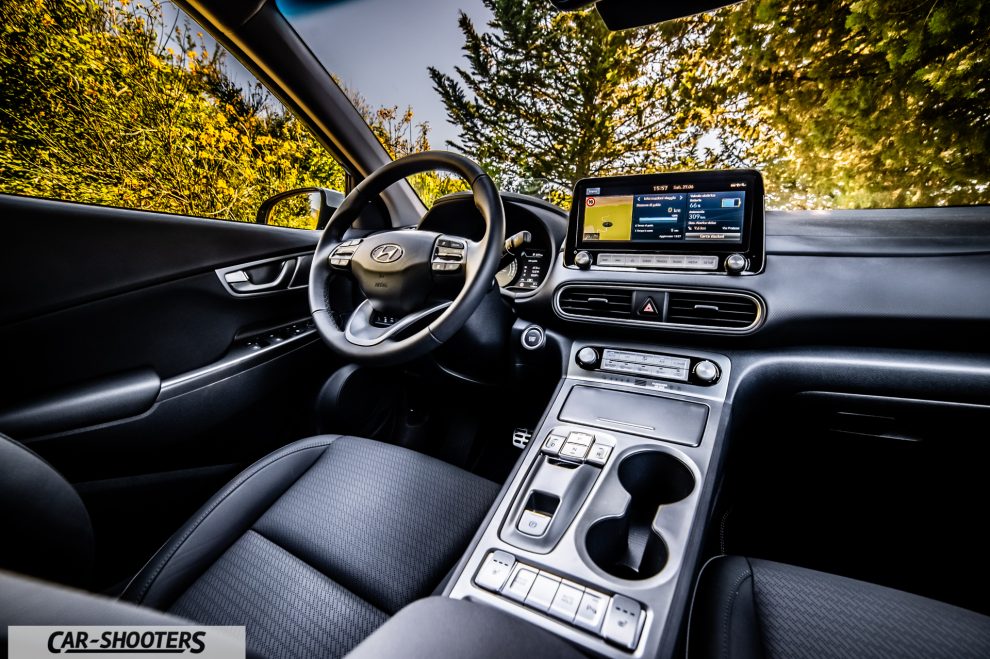
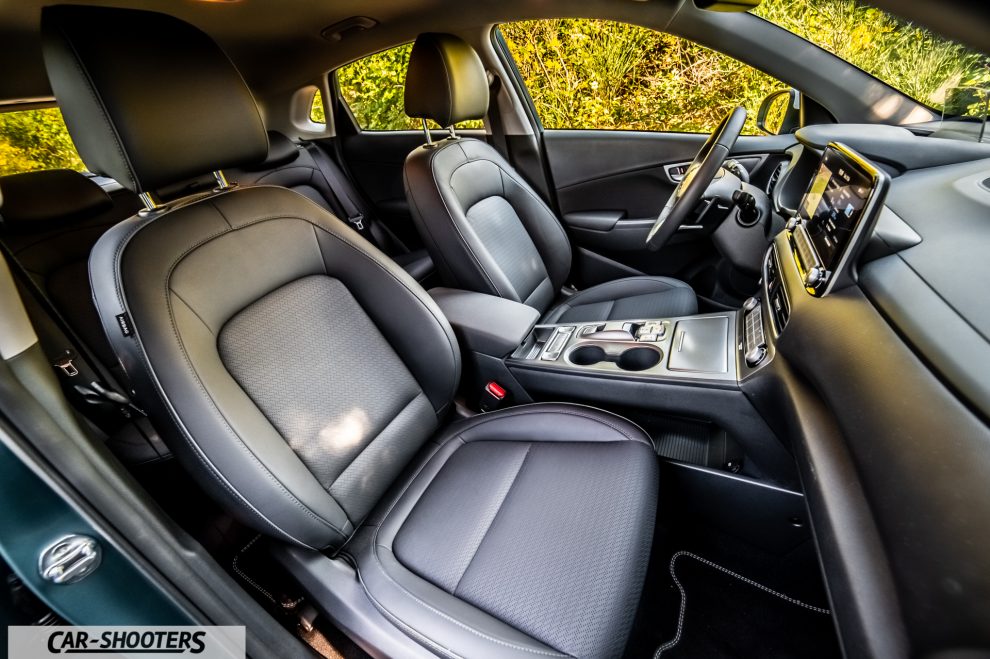
Another gem of this car is the infotainment system, renewed in MY 2020. The screen is a 10.25″ size with BlueLink, premium audio system, Carplay and Android Auto as standard. There are a lot of information in the infotainment regarding the management of the electric engine. In fact, we find a lot of information regarding the nearby columns with hourly availability, telephone numbers and information. The car is also able to estimate, a priori, a charge time based on the infrastructure to which it will be connected and, if necessary, it is also possible to limit the charging power directly from the touch screen. The infotainment system is connected to the Internet via a sim installed in the car and offers information on traffic, weather and points of interest. Then with the BlueLink application you can manage many aspects of Kona: from the interruption of the charging, to the switching on of the air conditioner passing through the closing and opening of windows and doors.
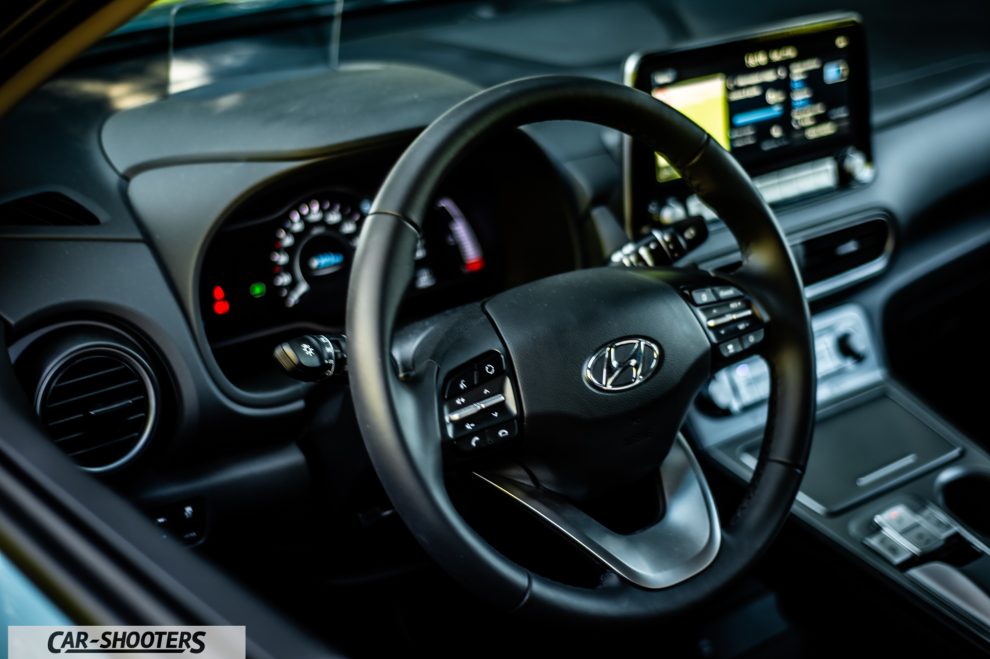
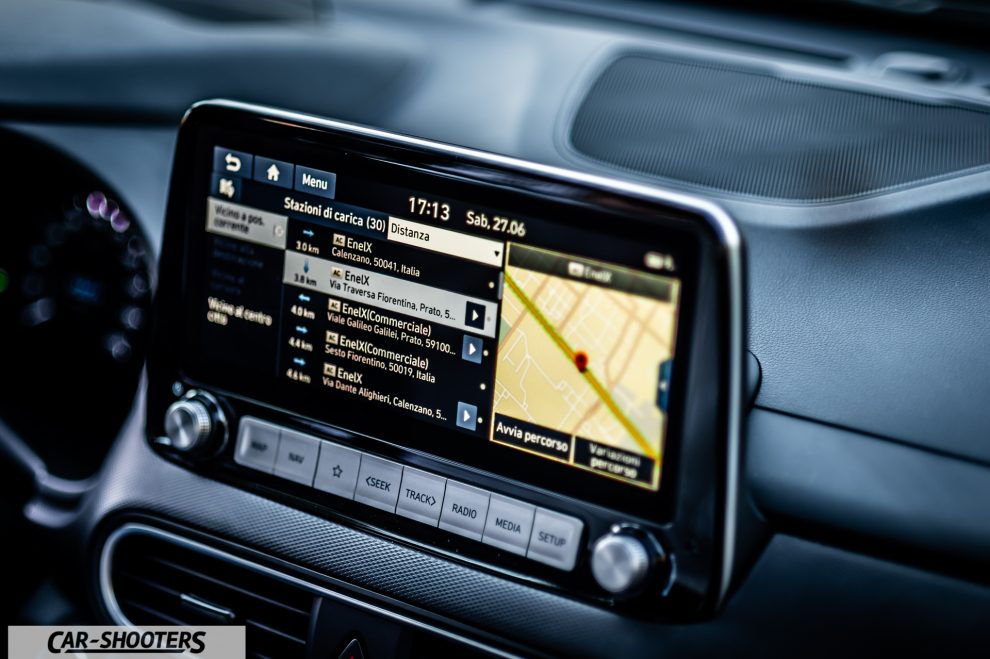
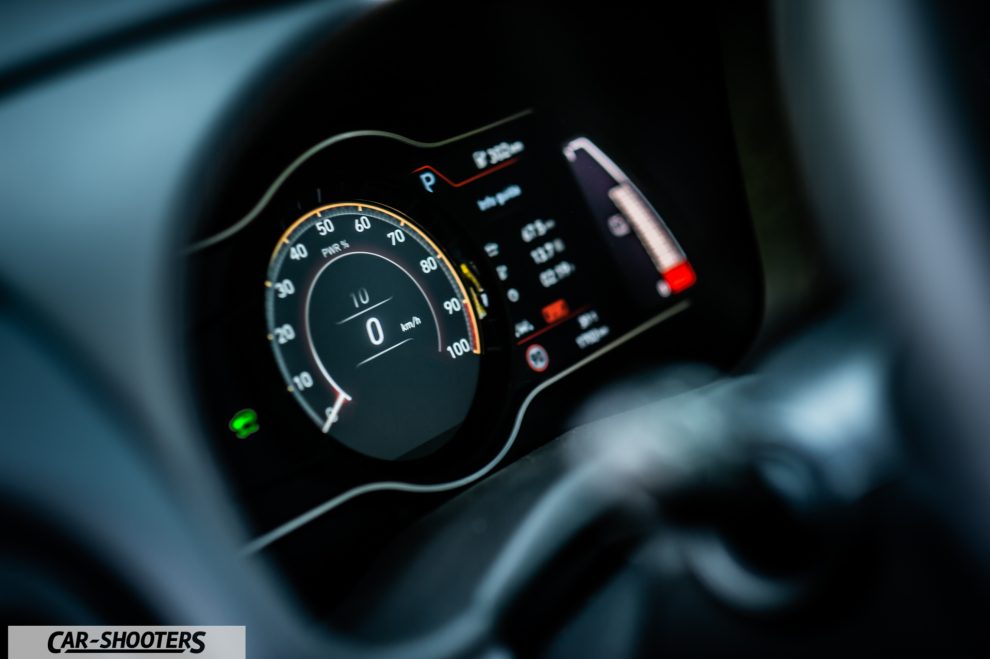
I got onboard and I am driving. A long highway road from Milan to Florence awaits me. In the city I set the Eco mode and go, the car is silent, absorbs the roughness of the road well and is always responsive thanks to its 204 horsepower with almost 400nm of maximum torque. It is truly pleasant, even in the busy streets of a metropolis like Milan. The paddles on the steering wheel are very convenient, allowing you to adjust the regenerative braking on three levels and, by keeping the left one pressed, you can stop the car completely. On the highway, on the other hand, I set the adaptive cruise with lane maintainer and in no time at all I find myself immersed in the countryside surrounding Florence. In this situation, I can experience a bit of Kona’s dynamic qualities that don’t disappoint in this respect either. Thanks to the batteries positioned in the lower area of the car, a low center of gravity is maintained, making it pleasant even in a winding road.
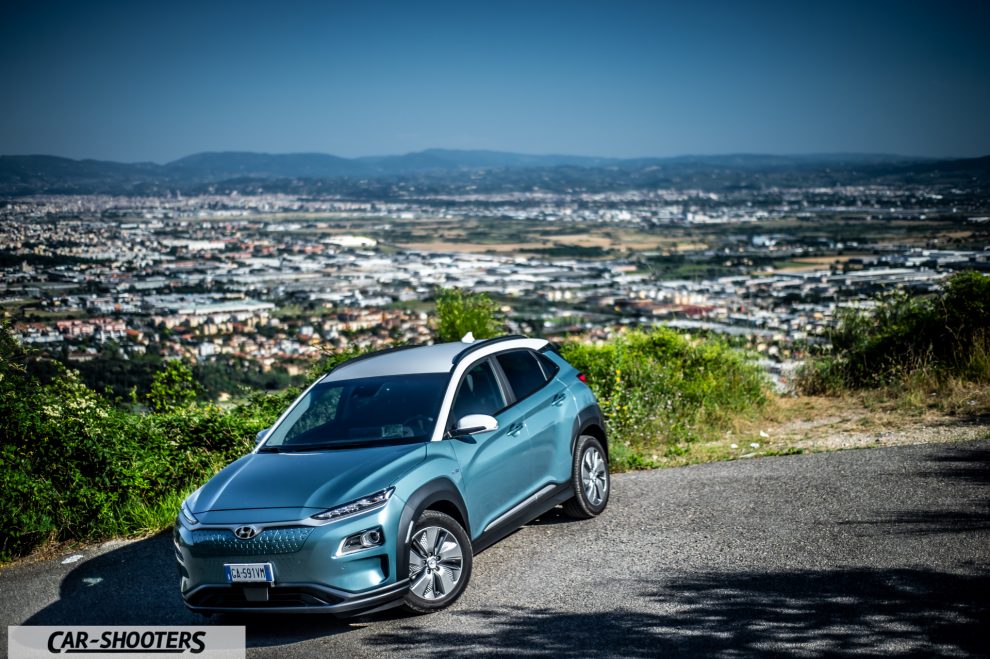
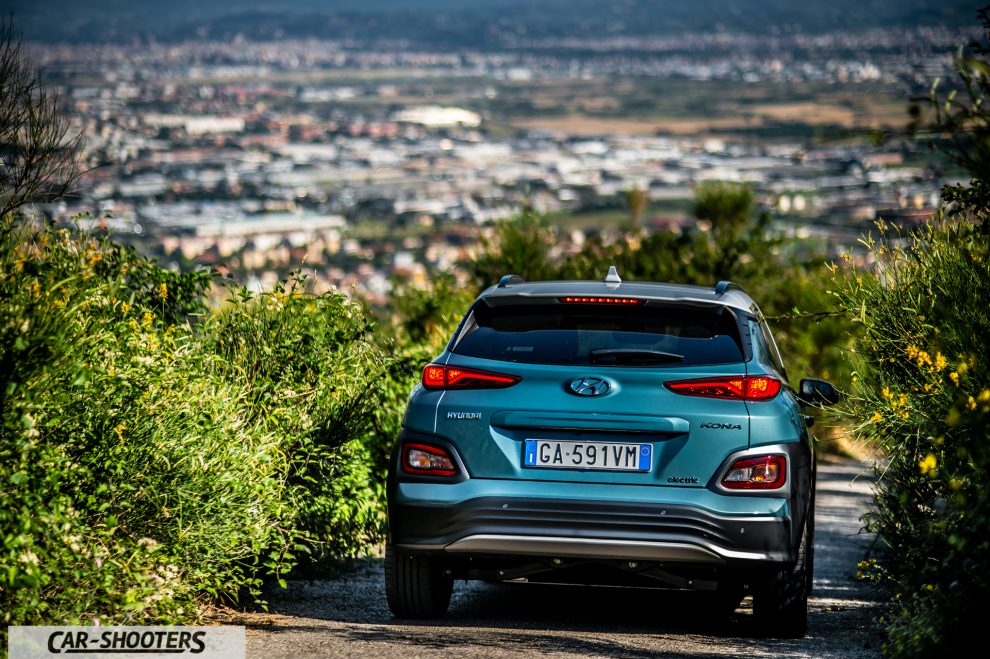
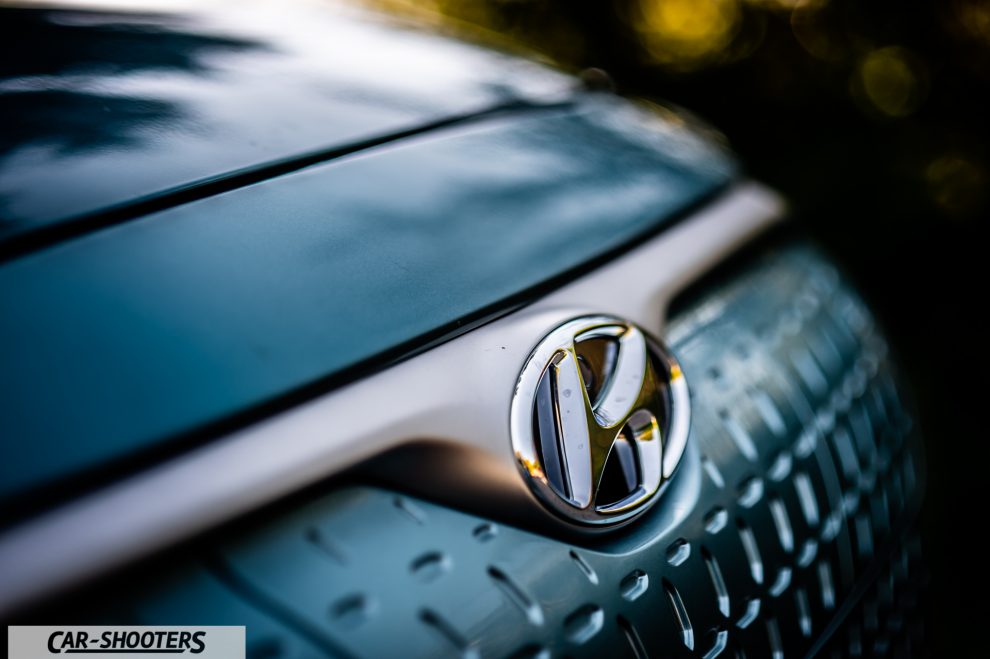
Returning home, I take a bit of the sums of what these last 300km have been. Driver assistance systems are perfectly tuned and never get annoying. The air conditioning is one of the best I’ve ever tried, it takes very little to cool the passenger compartment and once it reaches the temperature it becomes truly inaudible. The thing that left me most surprised, however, was the average consumption: 12.8kw / 100km going at an average speed of 110km / h. A monster of efficiency, even better than its more famous competitors. The autonomy is therefore also higher than declared in the combined cycle of 484km.
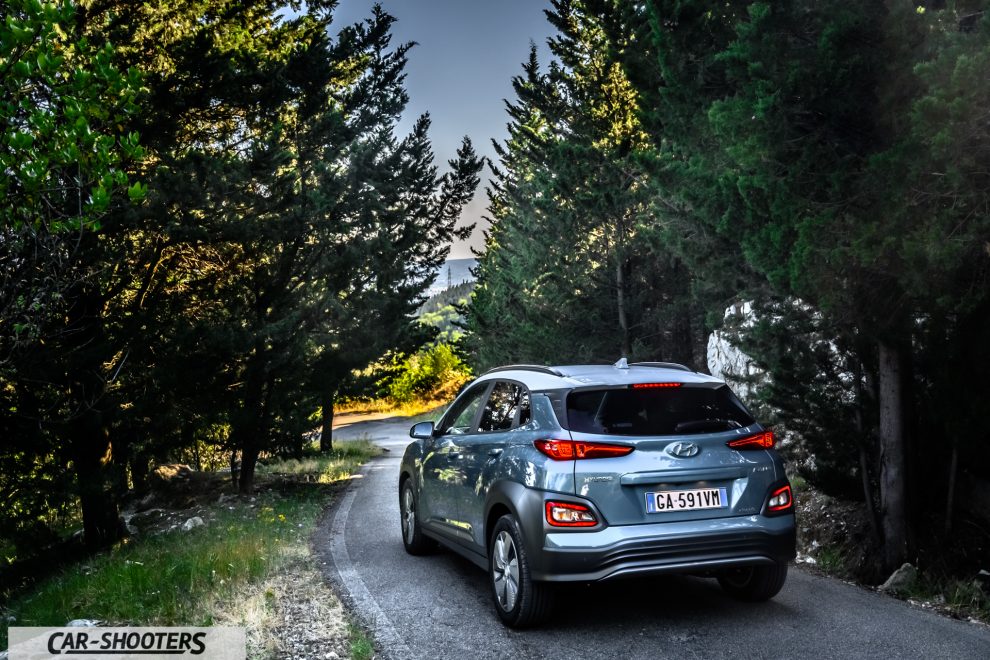
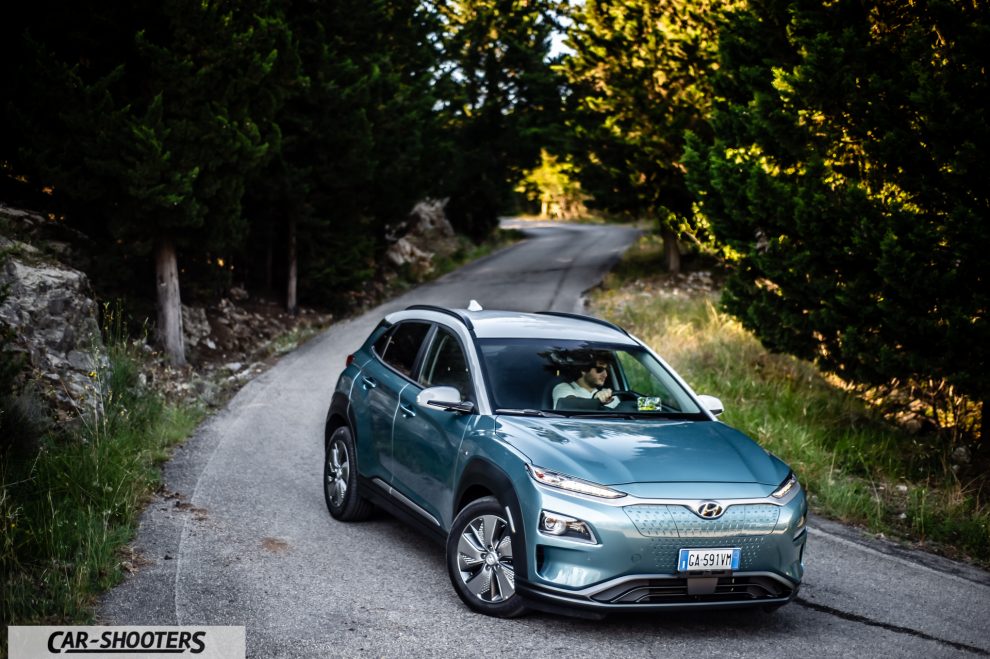
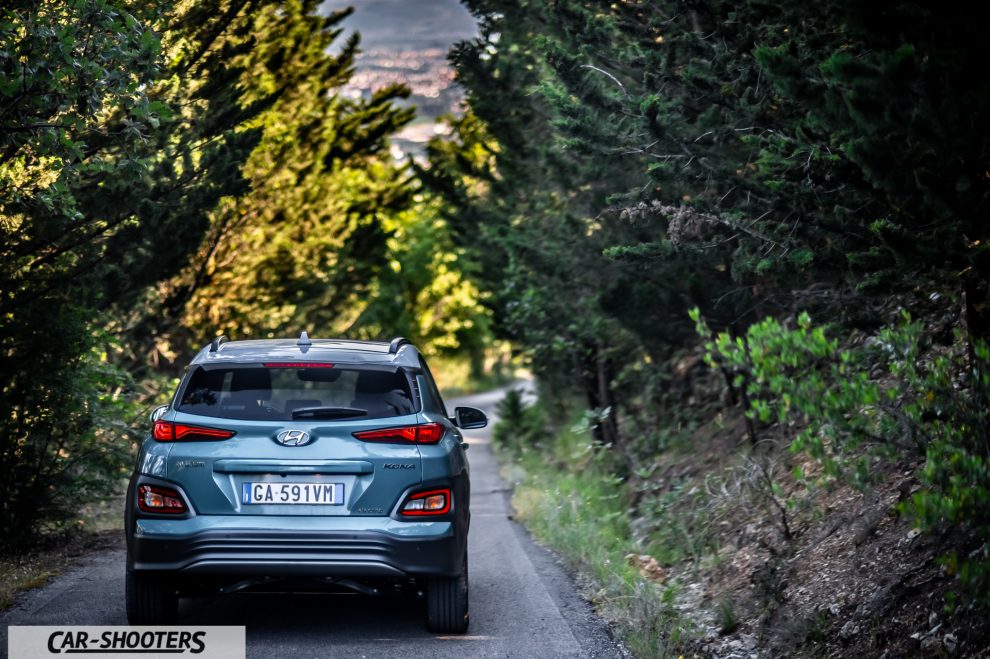
The starting price for the Kona Electric Excellence is € 49,200, and with a contrast roof, metallic paint and 11kw charger it is just over € 50,000. With the new eco-incentives, however, you can get a discount of € 10,000, and in some regions or cities even more, almost reaching the prices of the traditional version. Then counting the fuel savings over the years, the road tax zeroed for five years, a much less expensive maintenance and various advantages depending on the city, the gap between electricity and thermal is even shorter. Not to mention the superior performance that this electric variant offers compared to its petrol and diesel counterparts. I honestly would give it a little thought, and you?
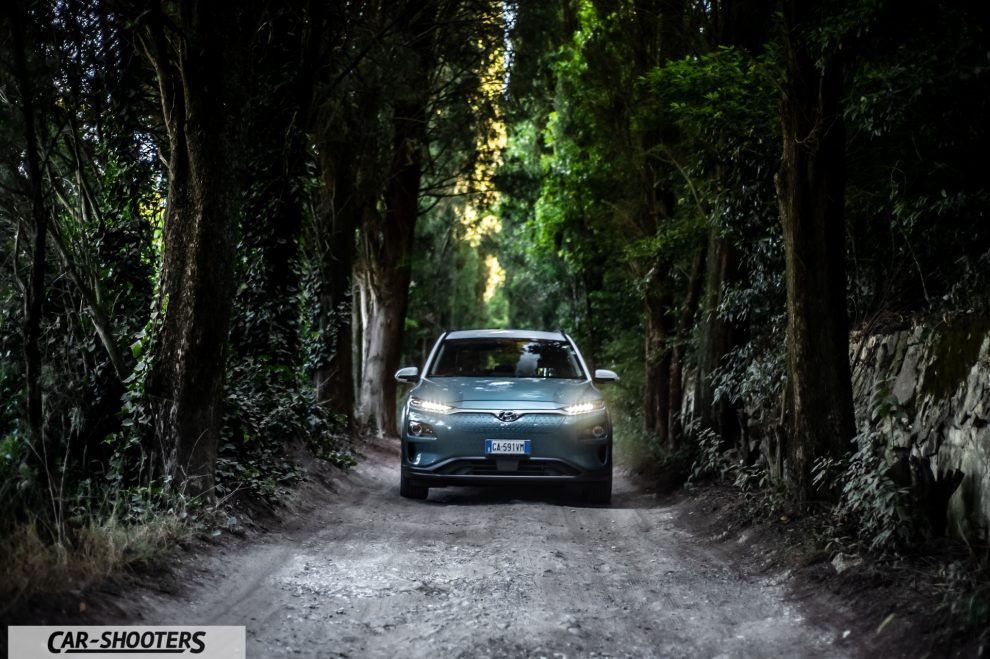
Bonus images:



